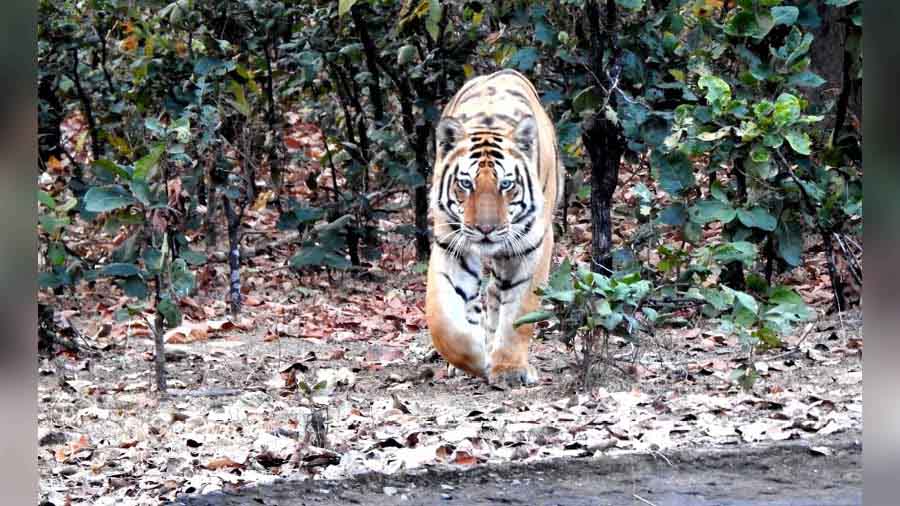The Sunderban Tiger Reserve (STR) is set to become bigger.
Three forest ranges in the South 24-Parganas forest division, all of them tiger habitats, will soon be made a part of the STR, said a senior forest official.
"We are going to have a bigger Sunderban Tiger Reserve. The three ranges of South 24-Parganas will be merged with the STR soon. That will intensify tiger management in the Sunderbans landscape," said Soumitra Dasgupta, head of the forest force in Bengal.
A formal clearance from the National Tiger Conservation Authority (NTCA) was awaited, he said.
The Sunderbans is spread across 10,000sqkm, a little above 4,000sqkm of which is in India. The rest is in Bangladesh. The Indian Sunderbans is split between the Sunderban Tiger Reserve and the South 24-Parganas forest division.
The Sunderban Tiger Reserve, one of the first nine tiger reserves that came into being following the launch of Project Tiger in 1973, now covers more than 2,500sqkm. It is made of the Sunderbans National Park (East and West) marked as the core area, and the Sajnekhali Wildlife Sanctuary and the Basirhat Range, which form the buffer zones.
The tiger habitat in the South 24-Parganas division includes the Matla, Raidighi and Ramganga ranges, measuring around 1,100sq km.
The three other ranges — Diamond Harbour, Namkhana and Kultali — do not have tigers, said forest officials.
"Post-merger, the buffer zone of the STR will include the three tiger ranges of Matla, Raidighi and Ramganga. The STR will now cover an area of over 3,500sqkm. More importantly, the entire tiger landscape of south Bengal will come under an unified administrative supervision, under the control of the field director of the STR," said a forest official.
"These three ranges are doing their best but once they come into the fold of the tiger reserve, the management of tiger conservation will be much easier," he added.
A summary report of the latest national tiger census said at least 100 tigers were photographed in the Sunderbans landscape.
Forest officials estimate a third of the tigers in the mangrove delta live outside the reserve area in the STR. “According to our estimate, there are around 30 tigers in the South 24-Parganas division," said a forest official.
However, the human interference in the forests of the South 24-Parganas division is more than that in the forests of the STR, said forest officials. "Only one block, Gosaba, is located on the fringes of the STR. All the remaining 21 blocks are closer to the forests of the South 24-Parganas division," said another official.
The pandemic had multiplied the human-wild conflict and many people started entering the forests to catch fish and crab. The trend has since gone down, said officials.
Biswajit Roy Roychoudhury, a wildlife expert and member of state wildlife advisory board, said the Sunderbans has been under increasing climate change impact, and it is important to carry out the related assessment. "Once the three tiger ranges of South 24-Parganas are integrated into the STR, it will be possible to have an holistic understanding of climatic impact on the Sunderbans forests,” he said.
"This was a long-due proposal, first made in 2017. Good that it is coming to fruition. It is a rationalisation of the forest area for better management of the tiger zone," said Ravikant Sinha, former chief wildlife warden of Bengal under whose tenure the proposal was first made.
